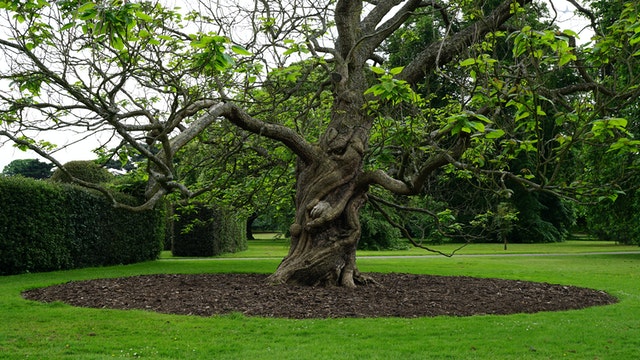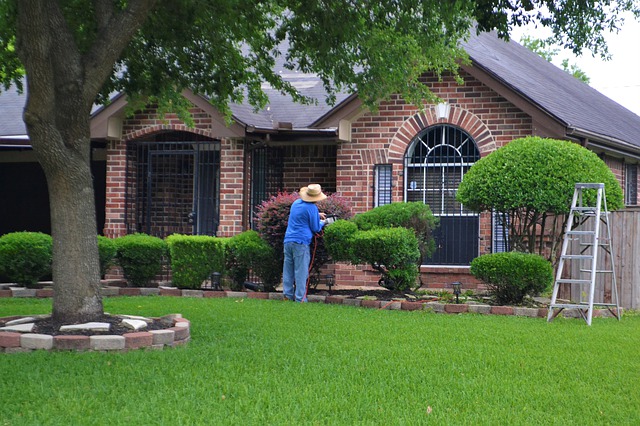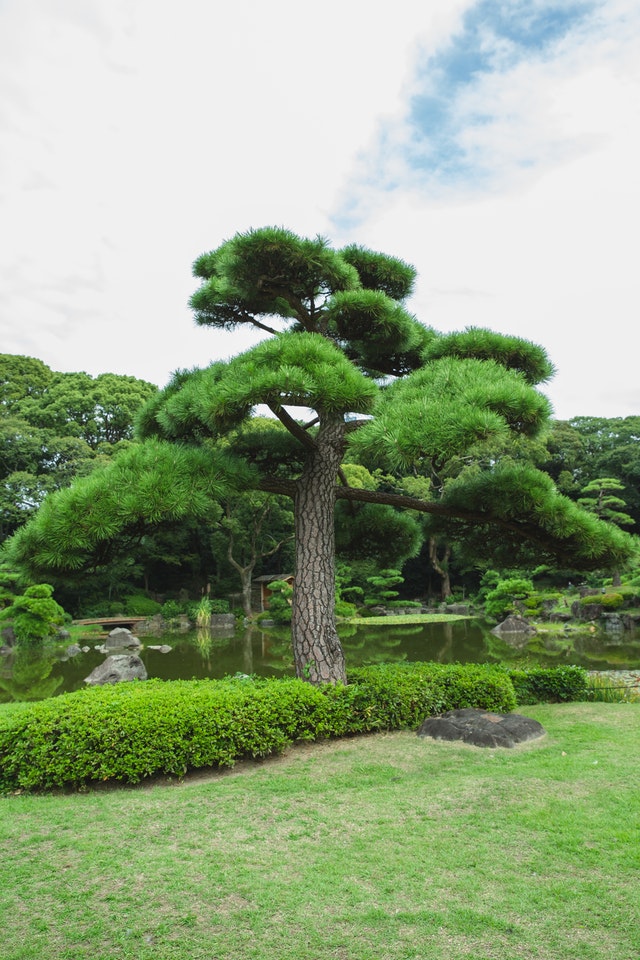Other conifers, like thuja plicata ‘Atrovirens’, create dense, lighter green hedging with a softer look. And for the fastest grower in the west, Lawson’s cypress (Chamaecyparis lawsoniana) grows at a rate of 1m (3ft 3in) a year. Like all forest trees, these conifers should be clipped, early in their life, to approximately 30cm (12in) below the chosen height so that the softer growth will thicken before attaining full height the following year. After this an annual clipping regime is essential to maintain a dense hedge; avoid cutting into the old wood, however.
Large-leaved hedges like hornbeam (Carpinus betulus), elaeagnus laurel (prunus laurocerasus) and beech (Fagus sylvatica) may be used in the formal garden where they will give a softer profile than more tightly shaped plants. That can be clipped but look better when cut by hand with secateurs. Both deciduous hornbeam and lime (Tilia) maybe pleached, which involves training their side branches horizontally to create parallel lines, to develop a stilt hedge. In this procedure, all other growth is woven in or removed, forming a dense leafy screen for 1.5-2m (5ft-6ft 6in) above the row of tree trunks, 1.5m (5ft) in height, which allow low views through. Stilt hedges are best purchased pre-formed, with their parallel lateral branches already trained to a timber frame. A revival of old techniques includes the use of woven and clipped hazel and willow hedges in contemporary gardens; they can b ordered ready-trained.
Dwarf hedges and parterres
There are many different forms of common box (Buxus sempervirens) that will reach over 6m (20ft) high and wide if required. But the slower-growing dwarf version, B. sempervirens ‘suffruticosa’, which may grow to 1.2m (4ft), can support really meticulous clipping to maintain a medium or low edging hedge of 75 cm (2ft 6in) down to 30cm (12in). It is perfect for preserving the detail of parterres. There is a variegated form, B. sempervirens ‘Elegantissima’, with cream edging. The Japanese box (B. Microphylla) has tiny leaves and the form ‘Green Pillow’ makes squat hummocks which look stylish in a minimalist group or repeat planted.
Other hardy plants suited to low sheared hedging and therefore often used to build parterres include some with silver-grey foliage. Cotton lavender (Santolina), cultivar of scented lavender like lavandula angustifolia ‘Hidcote’ and the tender French lavender (L. Stoechas) will provide gentle grey dwarf hedges. Both the Clippable evergreens lonicera nitida and L.plieata have tiny green leaves. In warm, sunny climate, the aromatic but slightly tender myrtle can take over from box. It grows fast and can be clipped low or at 2.5m (8ft) if needed. Look for the subspecies tarentina, the most compact and windproof, which was a favourite in roman gardens and is still popular in Mediterranean regions today.
Topiary
Topiary is an ancient craft in which suitable evergreen plants area tightly clipped to shape to make freestanding sculptural forms. All the small-leaved evergreens referred to above, particularly box and yew, as well as hollies and the reliable but rather dull privet (Ligustrum) can be clipped into any chosen shape. Though hollies will lose their crap of berries when sculpted, the foliage has a coarse –textured look, emphasized when variegated, and this can enliven a topiary garden of yew and box. The sculptural possibilities of these plants have historically been explored as spirals, cones, pyramids and layered ‘cakestands’, as well as the whimsy of animals and grotesques. These have now largely given way to the minimalist geometry of cubes, cylinders, rectangles or art deco shapes.





